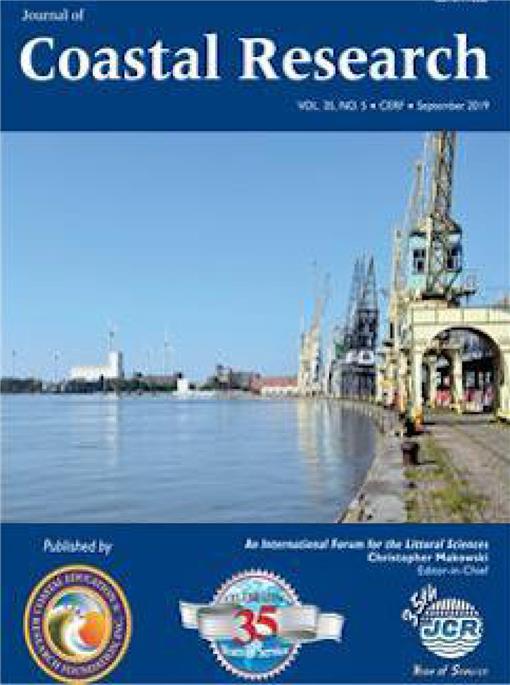Gainza, J.; Garnier, R.; Nuñez, P.; Jaramillo, C.; González, E.M.; Medina, R.; Liria, P.; Epelde, I.; Uriarte, A., and Monge-Ganuzas, M., 2019. Accelerating beach recovery by plowing the intertidal bar: A field experiment along the northern Spanish coast. Journal of Coastal Research, 35(5), 973–984. Coconut Creek (Florida), ISSN 0749-0208.
Subaerial beach width plays a vital role when it comes to protecting coastal settlements and communities from storms. In many beaches the accretionary sequence is often characterized by the onshore migration of one or several intertidal bars that can eventually weld to the shore and contribute to the increase of the dry (subaerial) beach surface. An innovative experiment was carried out in summer 2015 to accelerate the onshore movement of the intertidal bar at Laida beach, Basque Country, northern Spain, by plowing it mechanically. A control zone where the bar could evolve naturally and a test zone where the plowing was performed were both defined. The aim of this study is to assess the effect of plowing on intertidal bar migration by analyzing field data collected during the experiment. Hydrodynamic data were gathered during a 3-day field campaign. Additionally, six cross-shore transects were defined, and their topographic data were taken every 15 days. Furthermore, a video imaging system allowed following and recording the planform evolution of the beach. Analyzing each profile's topographic data, it was observed that the intertidal bar in the plowed zone moved farther onshore than the intertidal bar in the control zone, suggesting that the plowing accelerated the onshore migration of the bar. Sediment transport was calculated by feeding a sediment transport formula with the hydrodynamic measurements taken, and it was concluded that the natural onshore migration of the bar is driven by onshore transport gradients related to wave asymmetry and skewness. It is suggested that the plowing caused an increase of onshore sediment transport onto the intertidal bar. However, further study that includes other field experiments, physical modeling, or both is required to identify the processes involved.





